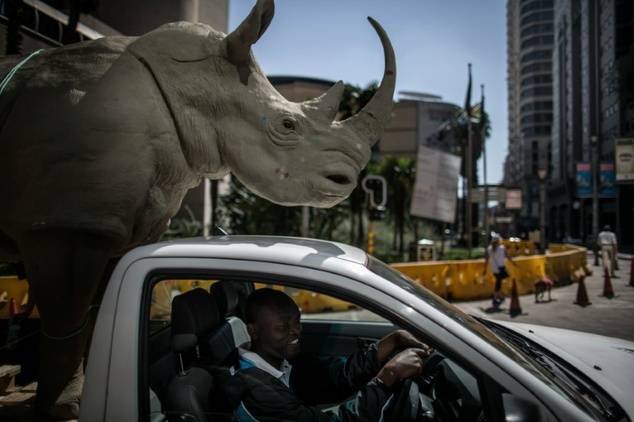World's biggest conference on international wildlife trade opens
Shares

JOHANNESBURG: (APP) South African President Jacob Zuma opened the world's biggest conference on the international wildlife trade in Johannesburg Saturday with a warning of the dire consequences of failing to tackle the demand for elephant ivory, rhino horn and hundreds of other endangered wild animals and plants.
Over the next 12 days thousands of conservationists and top government officials are due to thrash out international trade regulations aimed at protecting different species.
READ MORE: WWF urges Mexico to save tiny porpoise from extinction
The plight of Africa's rhino and elephants, targeted for their horns and tusks, in particular, is expected to dominate much of the gathering.
The booming illegal wildlife trade has put huge pressure on an existing treaty signed by more than 180 countries -- the Convention on International Trade in Endangered Species (CITES).
Opening the conference, Zuma said it was vital that nations worked together to pull species back from the brink.
"Levels of exploitation of some animal and plant species are high and the trade is capable of heavily depleting their populations and even bringing some species close to extinction," Zuma said.
CITES' secretary general John Scanlon said the meeting would "review trade controls of close to 500 species of wild animals and plants".
"High on the agenda we have the African elephants, the rhino, the pangolin... the silky shark," he said.
And while Scanlon hailed the deep commitment of all those taking part, he warned that "they sometimes have differing views on the best way to achieve this".
A coalition of 29 African countries is pressing for a total halt to the ivory trade to curb poaching of elephants, but other delegates believe it would only fuel illegal trading.
A recent census revealed that the savannah elephant population has declined by 30 percent over seven years.
Britain's Prince William said in a pre-CITES speech this week that the census confirmed that "one of our planet's most treasured species is on course for extinction at the hands of poachers and traffickers".
READ MORE: Climate Change, A severe threat to wildlife in Pakistan: Dr. Ejaz WWF – Pakistan
He added that when he was born there were one million elephants roaming Africa, but they could be extinct in the wild by the time his one-year-old daughter Charlotte turned 25.
Illegal trade in wildlife is valued at around $20 billion (18 billion euros) a year, according to CITES.
It is ranked among the world's largest illegal businesses alongside arms, counterfeit goods, drugs and human trafficking.
Several hundred activists meanwhile marched near the conference venue to push for the "strictest possible protection" for the most vulnerable species.
CITES forbids trade in elephant ivory, but Namibia and Zimbabwe have made a proposal asking for permission to sell off stockpiles to raise funds for local communities that co-exist with the animals.
On rhino horn trafficking, CITES banned that trade 40 years ago, but prohibition has not reduced illicit hunting, which has recently boomed in South Africa.
READ MORE: UN launches campaign against illegal wildlife trade
Around 5,000 white rhino -- a quarter of the population -- have been slaughtered over the past eight years, with the majority killed in South Africa, home to 80 percent of the world's rhino.
Rhino poaching is driven by insatiable demand in Vietnam and China for the horn, which is mistakenly believed to have medicinal powers curing everything from hangovers to cancer.
But China is now taking steps to clampdown on the domestic demand for ivory.
"China has made significant moves to combat illegal trade in wildlife," Scanlon told reporters, adding it had started prosecuting people involved in illegal trade and reducing demand by closing down local retail markets.
Other species high on the CITES radar are devils ray, rock geckos, tomato frogs and the African grey parrot.
Scanlon warned that illegal wildlife trafficking was "occurring on an industrial scale, driven by transnational organised criminal groups".
Besides animals, timber will be a focus.
When it first came into force in 1975, CITES only regulated a handful of timber species, but three years ago there were 600 types of timber listed under its appendices.
This year there are 250 species proposed for listing, especially of sought-after rosewood.
